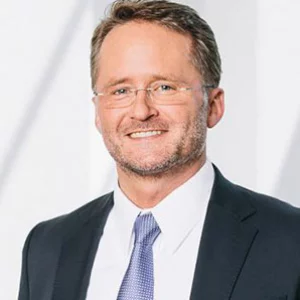Governments around the world are under enormous financial pressure. Budgets remain constrained in many countries while the need for investment—particularly in infrastructure—is growing.
A solution, however, is hiding in plain sight. Central governments worldwide control roughly $75 trillion in assets, according to conservative estimates—a staggering sum equal to the combined GDP of all countries. But governments struggle to properly manage and monetize those assets due to a variety of factors, including a lack of internal expertise, the difficulty of accurately valuing some assets, and the tendency of government to take a short-term view tied to election cycles.
Government leaders must take aggressive action to harness the value of the public assets under their control. Such action would not entail a large-scale privatization push, although some assets may be suitable for private ownership. Rather, government leaders should embrace private-sector best practices, fully accounting for the assets they control and determining what sort of ownership structure—full government control, a partnership with the private sector, or privatization—will deliver the best results. At the same time, they need to ensure that their asset strategies reflect the unique responsibilities of the public sector, including delivering on important policy objectives and engaging effectively with stakeholders who may be impacted by changes in asset ownership.
Government leaders must take aggressive action to harness the value of the public assets under their control.
The Government Investment Challenge
Governments own and control a vast array of public assets, including noncommercial assets, such as roads; commercial assets, such as state-owned enterprises; and commercial real estate holdings, such as buildings and land. The $75 trillion estimate encompasses only assets held by central governments. When assets held by regional, state, and city governments are included, the total value is much higher. (See “Unlocking The Public Wealth of Cities,” Centre for Public Impact, August 2017.)
But governments regularly overlook, undervalue, and underutilize the assets on their books. Many assets, for example, are overlooked due to flawed accounting standards, incomplete data and statistics, the failure to create a consolidated balance sheet, and poor asset management. And of the assets that are recognised and understood, many are operated without the kind of robust strategy and performance targets that are standard in the private sector.
While governments have generally been cautious in their approach to valuing and managing their assets to date, they will not be able to enjoy this luxury in the years ahead. Gross public debt as a proportion of GDP now exceeds 100% in a variety of economies, including Greece, Italy, Japan, and the US. This limits governments’ ability to invest, particularly in infrastructure, at a time when such investments are desperately needed to ensure that countries can support both economic growth and employment opportunities for their people. According to the Global Infrastructure Hub, the total cumulative global gap in investment required to meet infrastructure needs is projected to grow to $15 trillion by 2040.
Obstacles to Effective Asset Management
The imperative and the opportunity to tap public assets are great. So why do governments struggle to do this effectively or consistently?
First, there are basic obstacles to valuing government assets accurately. The potential uses of some assets may not be obvious or well understood—leading governments to underestimate their value. In addition, some assets are unique or have social or historical significance, making it difficult to determine their value.
Second, the way governments tend to operate can also get in the way of managing assets well. They generally focus on the short term, which is often driven by election cycles. This makes it difficult for public-sector managers and leaders to think strategically and execute long-term plans. In addition, government incentives and cultural norms are often geared toward minimizing risk, not maximizing returns. The result is that overly conservative approaches typically win out over higher-risk, higher-return options. And government often lacks the internal asset management capabilities and experience that are prevalent in the private sector.
Third, the public debate about government assets frequently focuses on either complete public ownership and management or privatization—when, in fact, the best option is often something in between. As a result, governments do not tend to take a nuanced view about how they can work with the private sector to improve the returns on their assets.
Harnessing the Value of Government Assets
To fully leverage the assets they control, governments need to embrace two key principles. First, they should adopt private-sector best practices for valuing and managing their assets. Second, they need to be sure that they are taking into account important public-sector responsibilities and constraints as they develop and execute their asset management strategies.
Governments should adopt private-sector best practices for valuing and managing their assets.
Learn from the private sector. Governments should embrace three key elements of private-sector asset management. The first is to take a long-term strategic view in managing the asset portfolio. This should involve developing a comprehensive view of all government assets and establishing a portfolio strategy for maximizing the return on all of those assets. While this is hardly the norm today, some countries are beginning to move in this direction. New Zealand and the UK, for example, have created balance sheets that track the value of all their public assets.
The second is to match the asset with the right approach for managing it. Selling an asset to the private sector outright is not the only way for governments to unlock value—and it is not always the best choice, either. Governments should consider three main transaction models:
- Corporatization. The government keeps full control of the asset but establishes a state-owned corporation to better operate and manage the asset.
- Partnerships. The public sector and the private sector can team up to invest in, manage, or operate the asset. This union can take many forms, including long-term leases, public-private partnerships, management contracts, and joint ventures.
- Privatization. This approach involves selling an asset to an entity in the private sector. This can include fully divesting an asset via a sale to a private organization, an IPO, or a spinoff.
Governments that have successfully managed their public assets have been very careful not to take a one-size-fits all approach. Consider, for example, the government of India, which has been looking to improve the return it generates on its asset base as part of an overall strategy to free up funding for infrastructure investment. To advance the effort, the government set out to develop a more effective approach to concessions—the contracts with the private sector for the management and operation of public assets. The government held public forums and workshops with private investors, in which it shared possible concession structures and sought feedback on precise structures and parameters. Those sessions helped the government better understand how to design concessions—including the length of contracts and the way in which the financial upside would be shared with the private-sector operator—in order to create a win-win for both the public sector and the private sector. The government has raised about $1.5 billion—roughly $500 million more than projected—through several recent transactions.
The third element of private-sector best practices is ensuring that the government has the right capabilities in-house to manage assets well. In the public sector, many people have either policy expertise or asset management expertise but not both. In addition, asset management expertise tends to exist in certain central units—the treasury department, for example—but is not widely found in other ministries or departments that have responsibility for managing significant assets.
Some governments have addressed this deficiency by creating a state-owned company that can be led by people with the right real estate expertise, often from the private sector. In Singapore, the country’s state-owned investment holding company, Temasek, manages some $225 billion in assets—a meaningful portion of which are real estate operations either wholly or partially owned by the company. These businesses, which operate at arm’s length using international market standards of management and governance and are open to full market competition, have helped the holding company generate sustainable returns and long-term growth.
Adapt the strategy to reflect public-sector realities. The private-sector playbook, of course, cannot be applied directly to the public sector. Government leaders need to adjust their approach in two ways.
First, they need to assess any tradeoffs between maximizing the return on an asset and supporting an important policy objective. Government has the responsibility, for example, to ensure that transactions do not limit the availability of important goods or services, such as public transportation and critical health care, to disadvantaged citizens. And government must balance the need to attract private investment with its responsibility to deliver or protect public goods, such as a healthy environment, data privacy, and national security.
Leaders need to assess any tradeoffs between maximizing the return on an asset and supporting an important policy objective.
If left unaddressed, such tensions can complicate—or even sink—potential deals. In 2016, for example, the Australian government intervened in, and ultimately blocked, the lease of an electricity distribution network to foreign bidders on the grounds of an unspecified national security concern. The underlying national security consideration—namely, that the network hosted infrastructure used by a military base—was not revealed to the public until 2018.
Second, governments need to solicit input from, and work with, affected stakeholders as they develop asset management plans. For instance, Petrobras, a state-run oil and gas company in Brazil, had a keen focus on building stakeholder support as it moved to privatize a number of assets. The divestiture program was primarily driven by the need to support both ongoing capital investment across Petrobras’s other assets and debt repayment. At the outset, the company undertook an in-depth analysis of a range of assets on its books to identify those that were appropriate for divestiture. As part of this process, the company carefully examined which assets—whether retained or divested—should remain together in order to maximize value.
As the divestiture plan was developed, Petrobras made sure to consult with important stakeholders, including government entities, industry regulators, and unions. For example, ensuring job security for Petrobras’s employees was a prerequisite to reduce industrial-relations resistance. As a result, most of Petrobras’s divestments were asset-only plays. These deals, under which a buyer would purchase an asset but Petrobras would retain the workforce to operate within that asset, provided ongoing job security for otherwise at-risk Petrobras employees. At the same time, company leaders were careful to build support within the ranks of management, recognizing the importance of widespread consensus to the success of the divestment program.
Creating Momentum
Governments have both an imperative and an opportunity to rethink the ownership structure and the management of the assets under their control. Doing this well demands a mindset change.
To begin making this shift, public-sector leaders should ask themselves three questions:
- Do we know the value of the assets under our control? For most, the answer will be no. In such cases, government leaders must push for a robust and transparent accounting of all public-sector assets as a prerequisite for developing a smart asset strategy.
- Which asset management capabilities do we have in-house, and which ones do we need to develop? The answer to this set of questions will inform where and how a government looks to build up commercial and asset management capabilities. Such efforts will require developing internal commercial leadership and collaborating with third parties to access specialized expertise and skills.
- Which of our assets would offer a compelling test case for a new approach? While holistic portfolio management is important, governments do not need to have a plan that encompasses all of their assets in order to get started. Government decision makers should identify the assets for which a change in ownership structure, or a different commercial approach, could unlock value—and then take prompt action to test the new approaches outlined above.
Posing and answering these questions can jump-start a government’s effort to improve how it owns and manages its assets—and help unlock billions of dollars in untapped public value along the way.












